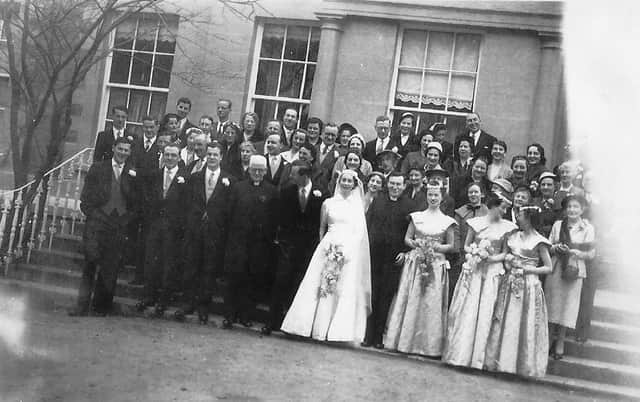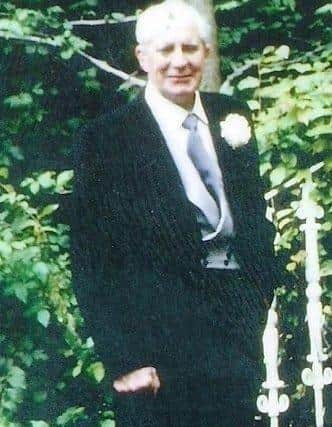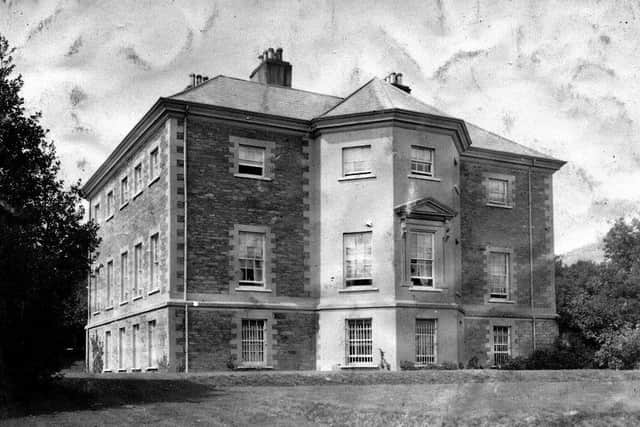The special tale of Boomhall, three sisters and a trio of Derry weddings


I am going to take a look at a famous, historical house along the banks of the River Foyle in Derry called Boomhall.
Along with being famous for being built on the site of where the boom was laid across the river during the Siege of Derry in 1689, it was where three lovely sisters from a prosperous Catholic merchant family celebrated their marriages in the 1950s and 1960s.
Advertisement
Hide AdAdvertisement
Hide AdThese were the Keohane sisters who were all nieces of the McDevitt family, owners of Boomhall. The McDevitts took the girls to live with them after their parents died when the girls were very young in the 1940s. The McDevitts were the first Catholic family to own the property since the house was built in the 18th century.


On accepting the Keohane girls into their family, they implicitly also took on the responsibility of, ultimately, ‘seeing them off in marriage’, when the time came. This happened on three occasions.
The first was the wedding in March 1956 of Mary Keohane, the middle girl of the trio, to Brian McElhinney, an architect from Dublin. The second was in 1957, that of the eldest girl, Helen, to Dr. John McCann, medical doctor and businessman from Cork. The third wedding was some years later in the mid-1960s of the youngest sister, Rosa. Rosa married Dr. Tom Henry, of Navan Co. Meath and London.
The Keohane girls clearly had a predilection for Southerners and for medical doctors. This was probably no surprise as their father’s side of the family had Cork and Dublin roots (as well as those in Derry) and their father, William Keohane, was himself a doctor.
Advertisement
Hide AdAdvertisement
Hide AdA little background on the three girls themselves. All three were very close in age (about a year or two separating each). In many ways, they conformed to the stereotypical pattern of siblings. Helen was very much ‘in charge’. Mary was ‘caught in the middle’ which produced a very independent spirit and charming demeanour, while Rosa was creative with a sense of style and fairly reserved. All three had very distinct personalities which, to some degree, dictated the future passage of their lives and the choices they made in life.


All three were sent to boarding school as young girls and, after their parents died, the McDevitt uncles and aunts continued their boarding education. Helen attended Mount Anville in Dublin while Mary and Rosa attended English boarding schools, Combe Bank and Coughton Hall, the former in Sevenoaks and the latter near Stratford-on- Avon. The choice of schools has an interesting origin. It was said that, as it was wartime, the girls’ mother, who was living with her doctor husband in London at the time, wanted to be able to travel to and fro between England and Ireland to see family. Because of wartime travel restrictions, this was greatly facilitated if a woman had a young child to visit in Ireland. Helen, thus, was supposedly placed in Mount Anville while Mary and Rosa remained in schools in England. To an extent, Helen’s presence in Ireland was an insurance policy for her mother in an era of straitened times.
The first wedding of the three to be celebrated at Boomhall was that of Mary Keohane to Brian McElhinney.
It took place on St. Patrick’s Day 1956 and the wedding ceremony itself took place at St Patrick’s Church, Pennyburn, and was celebrated by Rev. Joseph McCauley. The reception at Boomhall was a sumptuous affair attended by many Dublin and Derry guests. Mary’s sisters, Helen and Rosa, were both bridesmaids along with a cousin, Eileen Deehan, a dentist in Derry.
Advertisement
Hide AdAdvertisement
Hide AdShortly after the wedding, the young couple headed off to Lagos, Nigeria where Brian had been offered a job as an architect.


The second wedding was that of Helen Keohane to John McCann of Waterford and Cork. This was followed by a move away from Derry to Cork by the young couple.
The last of the three weddings was of Rosa to Dr. Tom Henry, both of whom were living in London at the time. Tom was a doctor and Rosa, a social worker at the renowned St. Thomas’ Hospital in Southwark. This was considered one of the best teaching hospitals in London, comprising, as it did, a rather select group of young nurses and doctors. St. Thomas’s was part of a renowned group of teaching hospitals at the time, including St. Bart’s, Guy’s and St. Mary’s, Paddington. It was said that, when choosing London nurses, St. Thomas’s was for ladies, St. Bart’s was for nurses, but Guy’s was for Gals!
Everyone remarked how fitting a backdrop Boomhall was for these weddings - an 18th century house backing onto the Foyle with resonances of a hugely important event in Irish history.
Advertisement
Hide AdAdvertisement
Hide AdIt was originally built for the Alexander family, of Caledon, a descendant of the family being the famous Field Marshal Harold Alexander of Tunis of Second World War fame.
The three Keohane girls were regular visitors to Boomhall after their marriages. The McDevitt elders had fulfilled their duty in feeding, educating and, ultimately, seeing off their three nieces into holy matrimony. This was part of an implicit commitment of care to their own deceased sister (the nieces’ mother) as she faced an early death through illness in Britain during wartime.
The McDevitt family was regarded locally by all sections of the community as decent and benevolent. Hospitality begins at home and the McDevitts showed this in abundance to their young charges throughout their lives.
Having them marry from Boomhall was a last gesture of commitment to each niece as they set out on their new path through married life – symbolic of the love and commitment of the McDevitt elders: Michael, Patrick, Annette and Marcella.
Advertisement
Hide AdAdvertisement
Hide AdBoth Helen and Mary had three children each (three boys in each case). Each son, at one time or another, also managed to visit Boomhall before its demise in the late 1960s.
○ Paul McElhinney is a writer and lecturer living in Wexford. Related to the McDevitts of Boomhall, he lived there briefly in the 1960s. He has worked in Dublin, London and Washington, including eight years working in the Department of the Taoiseach in the 1980s.